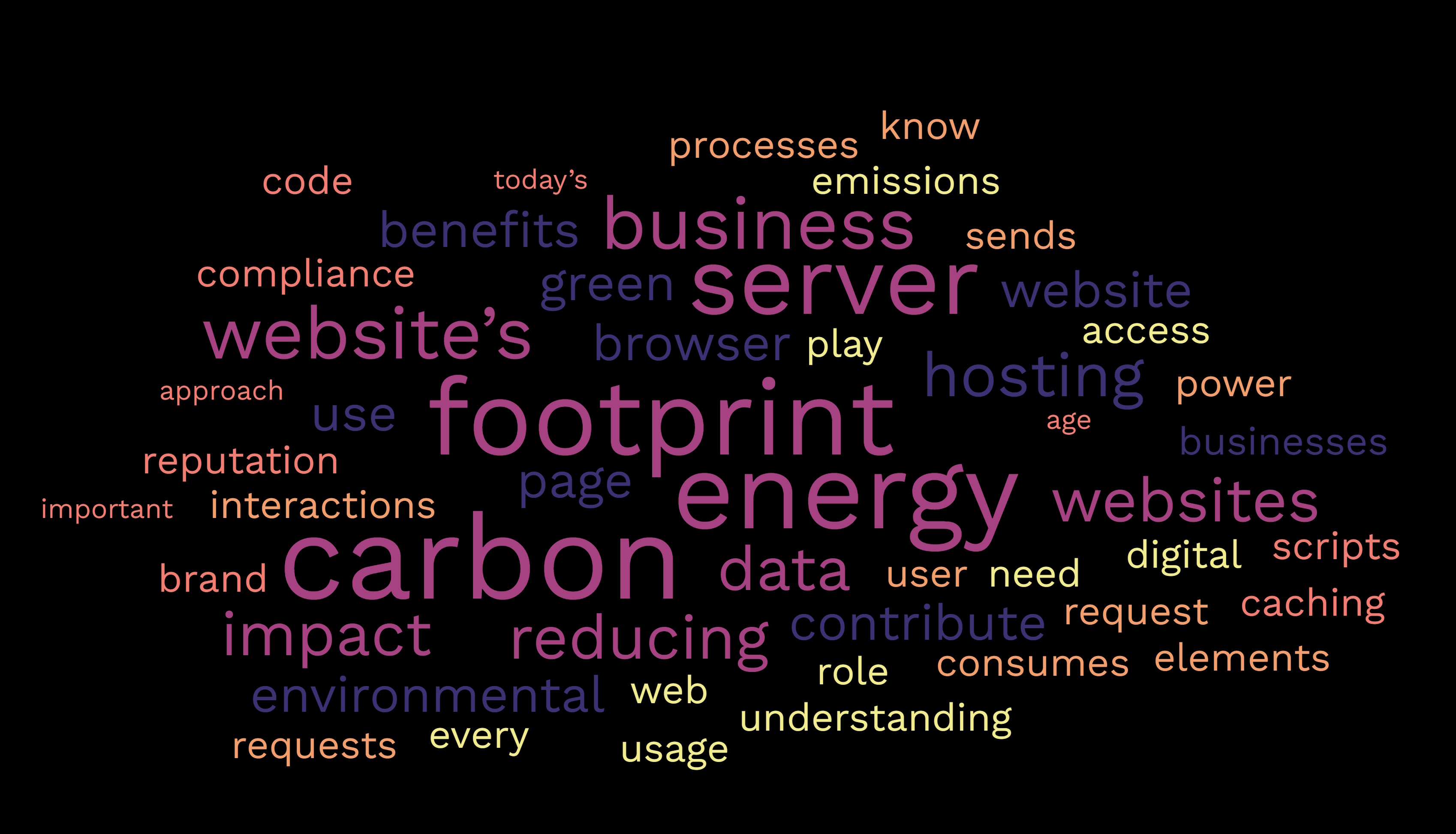The Carbon Footprint of Your Website: A Green Approach for Businesses

The Carbon Footprint of Your Website: A Green Approach for Businesses
In today’s digital age, where websites play a important role in our lives, it’s essential to consider their environmental impact. Web sustainability is a critical topic that encompasses various aspects, from technical details to design and content organisation. Let’s explore why understanding your website’s carbon footprint matters and how it can benefit your business.
Why Does It Matter?
Climate change poses a significant threat, and we all need to contribute to reducing our carbon footprint. Surprisingly, websites play a role in this global effort. Here’s why:
- Energy Consumption: Digital technologies and internet usage account for approximately 4% of greenhouse gas emissions. As more people access the web, this impact grows each year.
- Every Interaction Counts: Every action on your website consumes energy. When a visitor accesses your site, their browser sends an HTTP request to your server, which responds by using energy. Additionally, the browser processes data to display the page. Multiply these interactions across all websites globally, and you’ll realise the cumulative impact.
Elements Contributing to Your Website’s Carbon Footprint
Understanding the factors that contribute to your website’s carbon footprint is crucial. Here are some key elements:
- User Interactions: Each click, scroll, or form submission requires energy. Even seemingly minor actions add up.
- Server Response: When a user requests information from your server, it consumes energy. The server processes the request and sends back the necessary data.
- Browser Processing: Browsers also use power to process data and present the page to visitors.
Reducing Your Website’s Carbon Footprint
Now that we know the problem, let’s discuss solutions:
- Optimise Code and Assets: Efficient code and properly compressed images reduce server load and save energy.
- Choose Green Hosting: Select hosting providers that use renewable energy sources. Look for certifications like carbon-neutral hosting.
- Minimise Third-Party Scripts: Limit the use of external scripts, as they often slow down page loading and increase energy usage.
- Implement Caching: Caching stores frequently accessed data, reducing the need for repeated server requests.
Business Benefits of a Reduced Carbon Footprint
Beyond environmental responsibility, there are tangible benefits for your business:
- Cost Savings: Energy-efficient websites consume less server resources, leading to lower hosting costs.
- Reputation and Brand Image: Demonstrating environmental consciousness enhances your brand reputation and attracts eco-conscious consumers.
- Attracting Talent: Employees increasingly seek socially responsible employers. A green website can be a selling point.
- Regulatory Compliance: Many regions now require businesses to report their carbon emissions. Being proactive ensures compliance.
- Access to New Markets: Eco-friendly practices resonate with environmentally conscious audiences, potentially expanding your customer base.
Conclusion
As a business owner, you have the power to make a positive impact. By reducing your website’s carbon footprint, you contribute to a healthier environment while reaping the benefits for your business. Contact Us to know more